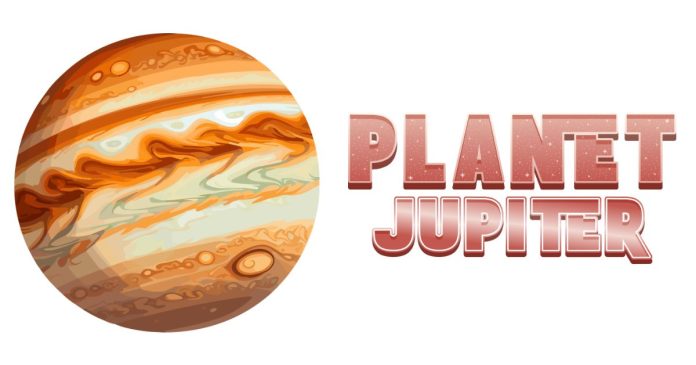The atmosphere of Jupiter is primarily made up of hydrogen and helium, with trace amounts of other gases. Here’s a breakdown of its composition and what makes it unique:
1. Hydrogen (H2) – About 90%
Hydrogen is by far the most abundant element in Jupiter’s atmosphere, making up around 90% of its composition. As the lightest and most abundant element in the universe, hydrogen plays a central role in the structure and dynamics of the planet.
- Hydrogen is the building block of many of the compounds found in Jupiter’s atmosphere. It’s primarily in its molecular form (H2), but at higher altitudes, it can also exist in ionized or atomic forms.
2. Helium (He) – About 10%
The second most abundant element in Jupiter’s atmosphere is helium, making up about 10% of its composition. Helium is the second lightest element, and while it is much less abundant than hydrogen, it’s still a significant part of Jupiter’s atmospheric makeup.
- Interestingly, helium is much less abundant on Jupiter compared to our Sun, where it makes up about 25%. Some scientists believe that Jupiter may have lost some of its original helium content over time due to its low-temperature environment.
3. Methane (CH4), Ammonia (NH3), Water Vapor (H2O), and Other Trace Gases
In addition to hydrogen and helium, Jupiter’s atmosphere contains smaller amounts of other gases, including:
- Methane (CH4): Present in trace amounts, methane is a key component in the atmospheres of many gas giants. It is thought to play a role in the planet’s cloud formation and chemical reactions.
- Ammonia (NH3): Ammonia is a significant component of Jupiter’s cloud layers. It can form clouds at higher altitudes and plays a key role in chemical reactions that occur in the planet’s atmosphere.
- Water Vapor (H2O): Water vapor is present in small amounts, but it is crucial for the cloud formation and dynamic weather systems on Jupiter. Water clouds form lower in the atmosphere, contributing to Jupiter’s weather patterns.
- Hydrogen Sulfide (H2S): Another trace gas found in Jupiter’s clouds is hydrogen sulfide, which is thought to contribute to the planet’s distinctive yellowish and brownish hues in the cloud layers.
- Phosphine (PH3): Phosphine is found in trace amounts in Jupiter’s atmosphere and plays a role in the chemical composition of the clouds and hazes that surround the planet.
4. Clouds and Layers in the Atmosphere
Jupiter’s atmosphere is made up of several distinct cloud layers, each composed of different chemical compounds, and each located at different altitudes:
- Upper Cloud Layer: This layer consists primarily of ammonia clouds, which are responsible for the planet’s distinctive light-colored bands (the white clouds).
- Middle Cloud Layer: Below the ammonia clouds, the middle layer is made up of ammonium hydrosulfide clouds, which contribute to the planet’s darker bands and bands of swirling storms.
- Lower Cloud Layer: The deepest clouds are made of water vapor and ammonia. These clouds exist under immense pressure and are thought to be where the planet’s storms and lightning are generated.
5. The Great Red Spot
One of Jupiter’s most famous features, the Great Red Spot, is a massive storm that has been raging for at least 400 years. The composition of the clouds in this storm is largely hydrogen, helium, and ammonia, along with complex molecules that may give it its distinctive red hue. However, scientists are still investigating the precise chemical processes behind its coloration.
6. The Outer Atmosphere
The outermost layer of Jupiter’s atmosphere is composed of thin layers of hydrogen, helium, and other gases. It is primarily transparent to sunlight, which allows astronomers to study the inner layers of the planet through various telescopic and space probe observations.
In Conclusion
Jupiter’s atmosphere is primarily composed of hydrogen and helium, making it very different from the atmosphere on Earth. It also contains trace amounts of methane, ammonia, water vapor, and other gases. The planet’s complex cloud system, dynamic weather patterns, and colorful bands are driven by the interactions of these gases, as well as the planet’s immense size and strong magnetic field. Jupiter’s atmosphere remains a subject of fascination for scientists, offering clues about the formation of gas giants and the broader processes of planetary atmospheres in our solar system and beyond.


